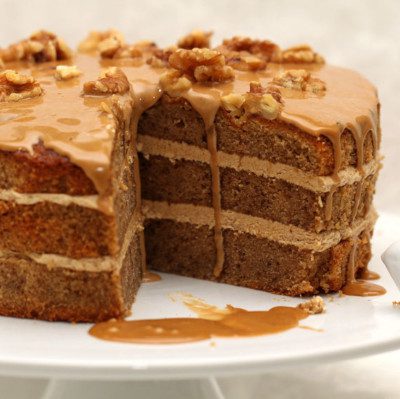Origin
The clean label trend has growing in popularity and scope. Now, it includes a number of bakery products such as breads, cakes, cookies and many others. In cakes, it usually means the label has:
- No artificial colors
- No artificial flavors
- No bleached flour
- No bromated flour
- No chlorinated flour
- No high fructose corn syrup
- No preservatives
- No artificial emulsifiers
- No leavening acids like aluminum-based phosphates and sulfates
How do clean label cakes work?
To qualify as “clean label,” cakes should only have ingredients that are functional and compliant with the terms above. The alternative ingredients should help with batter aeration, cake cell structure, volume and texture. Also, they must be recognizable and not hurt the quality of the end product.1
Application
When creating a clean-label cake formula, a few ingredients substitutions are:
- Emulsifiers: added to emulsify, provide strength and improve cake texture. Sodium and calcium stearoyl lactylate, ethoxylated monoglycerides, DATEM, sucrose esters, and polysorbates are not used in a clean label. So, alternatives solutions include enzymes, egg yolk, lecithin, and natural hydrocolloids like gums.2
- Preservatives: help with mold control and shelf life extension. Propionates, sorbates, and benzoates can be replaced with cultured whey, wheat flour, vinegar, raisin juice concentrate, sorbic acid and starters or live cultures of lactic acid bacteria.2
- Stabilizers and thickening agents: increase batter viscosity and help stabilize gas bubbles. Other functions include improving texture and overall cake structure. Clean-label alternatives are natural hydrocolloids like modified cereal, roots and tuber starches, and gums such as xanthan, Arabic and guar gum.2
- Aluminum-based phosphates and sulfates: finding clean label alternatives for this category is still quite challenging. Fat-coated microcapsules of organic acids or soda can effective replacements for slow-acting leavening agents such as SALP and SAS.
- High Fructose Corn Syrup: used as a low cost sweetener in baked goods. Clean label alternatives include invert sugar, honey, rice syrup, maple syrup, organic sugar.
The following is a typical formula for clean label devil’s food cake:3,4,5
| Ingredients | Baker’s % (based on flour weight) |
| Heat-treated cake flour* (non chlorinated and non bromated) | 100.0 |
| Salt | 3.0–4.0 |
| Organic sugar (refined, granulated sucrose) | 140.0–160.0 |
| Nonfat dry milk | 10.0–12.0 |
| Sodium bicarbonate | 2.0–2.5 |
| Leavening acid (encapsulated)** | Formulated based on neutralizing value of selected acid, and desired gassing rate of leavening system. |
| Liquid whole eggs | 90.0–100.0 |
| Water / skimmed milk | 100.0–120.0 |
| Butter | 45.0–55.0 |
| Natural cocoa | 15.0–20.0 |
| Natural vanilla extract | 0.5–1.0 |
| Gums | 0.1–0.5 |
| Instant / pregelatinized starch | 2.0–3.0 |
| Soy lecithin | 0.5–1.5 |
| Lipase (lecithin and triglycerides synergistic) | 40–90 ppm |
*Flour milled from soft red winter or soft white wheat, 6.0–8.5% protein, 0.25–0.35% ash.
**Reactivity of encapsulated acid also depends on the melting point of coating fat.
Creaming method process for clean label
The creaming method is a good processing option for making clean label layer cakes. This is because creaming enhances batter aeration, improves product volume and produces a finer grain. First, sugar, butter and an emulsifier are mixed to form a “cream.” Then, eggs are then incorporated gradually into the cream. Last of all, the remaining dry ingredients are added alternately with water or skimmed milk.
FDA regulation
Currently, there is no FDA definition for clean label or any regulation on clean label ingredients or processes.
References
- Penny, T. “The development of a clean label high ratio cake concentrate.” AACC International Annual Meeting, 2014. Horizon Milling.
- “Top 5 Production Problems When Switching to a Clean Label.” AIB International, 28 February 2017.
- Cauvain, S.P. “Raw Materials.” Baking Problems Solved, 2nd edition, Woodhead Publishing, Elsevier Ltd., 2017, p. 68.
- Posner, E.S. “Milling of Soft Wheat.” Wheat Flour Milling, 2nd edition, AACC International, Inc., 2011, pp. 353–364.
- Sahi, S.S. “Cake Emulsions.” Food Engineering Aspects of Baking Sweet Goods, CRC Press, Taylor & Francis Group, LLC, 2008, pp. 81–97.

